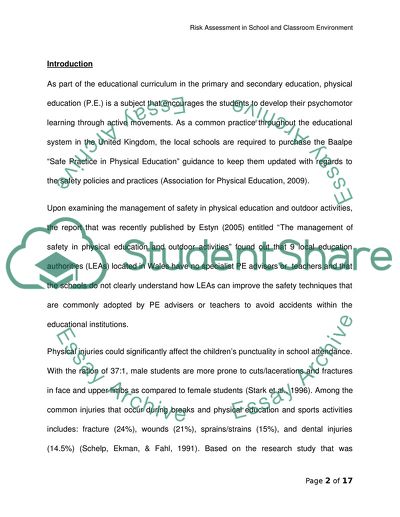Cite this document
(Risk Assessment in School and Classroom Environment Assignment, n.d.)
Risk Assessment in School and Classroom Environment Assignment. Retrieved from https://studentshare.org/education/1727908-essay-critically-evaluate-the-need-for-pe-teachers-being-aware-of-risk-assessment-in-the-classroom
Risk Assessment in School and Classroom Environment Assignment. Retrieved from https://studentshare.org/education/1727908-essay-critically-evaluate-the-need-for-pe-teachers-being-aware-of-risk-assessment-in-the-classroom
(Risk Assessment in School and Classroom Environment Assignment)
Risk Assessment in School and Classroom Environment Assignment. https://studentshare.org/education/1727908-essay-critically-evaluate-the-need-for-pe-teachers-being-aware-of-risk-assessment-in-the-classroom.
Risk Assessment in School and Classroom Environment Assignment. https://studentshare.org/education/1727908-essay-critically-evaluate-the-need-for-pe-teachers-being-aware-of-risk-assessment-in-the-classroom.
“Risk Assessment in School and Classroom Environment Assignment”, n.d. https://studentshare.org/education/1727908-essay-critically-evaluate-the-need-for-pe-teachers-being-aware-of-risk-assessment-in-the-classroom.


